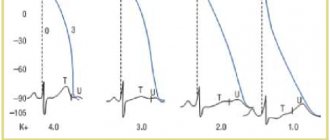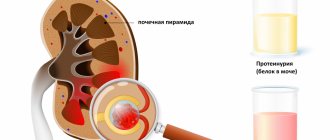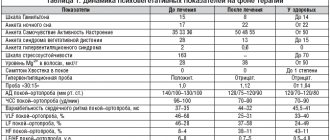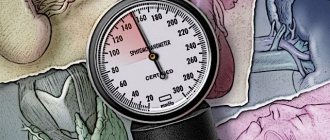Magnesium in the blood
In blood serum, approximately half of magnesium ions, like calcium, are in ionized (free) form, the other half are complexed with proteins or in the form of various salts. The reasons for changes in the level of magnesium in the blood are mainly due to disturbances in the supply of the ion through the gastrointestinal tract and/or renal dysfunction.
Hypomagnesemia often develops due to loss or insufficient supply of Mg through the gastrointestinal tract. Mg losses are high in acute and chronic dyspepsia, enteritis, ulcerative colitis, and the presence of intestinal fistula. 20% of severe hypomagnesemia occurs in acute intestinal obstruction and edematous pancreatitis. Reduced magnesium content in the blood in alcoholism. Increased excretion of magnesium, caused by damage to the renal tubules, hormonal disorders, intoxication, iatrogenic influences, is also a common cause of hypomagnesemia. Hypercalcemia, by reducing the reabsorption of Mg in the tubules, contributes to hypomagnesemia.
A physiological decrease in the concentration of magnesium in the blood can occur with an increased need for the macronutrient in the body during the period of active growth, during pregnancy, and during significant physical activity.
Increased levels of magnesium in the blood are found in cases of impaired renal function, dehydration, severe diabetic acidosis and Addison's disease. Hypermagnesemia is noted in hypothyroidism, lactic acidosis, hepatitis, malignant neoplasms, and renal failure.
Indications for the study
- Neurological pathology;
- hypertension, arrhythmia;
- kidney diseases;
- diseases of the endocrine system (hyper- and hypothyroidism, acromegaly, pheochromocytoma, adrenal insufficiency, hypofunction of thyroid C-cells, diabetes mellitus, etc.);
- taking diuretics and other medications whose effects or side effects include changes in magnesium levels (aminoglycosides, cyclosporine, etc.).
Features of sample collection and storage.
Blood collection for a magnesium test should be carried out with minimal compression of the vein, without muscle load. Do not use oxalate, citrate or EDTA as anticoagulants. Serum or plasma (heparin) should be carefully and quickly separated from the cellular elements of the blood.
Research method.
The most common in modern laboratory practice are colorimetric methods for determining the level of magnesium in the blood, based on the formation of colored complexes specific for magnesium.
Increased values
- Kidney failure;
- adrenal insufficiency;
- overdose of magnesium, lithium, laxatives, antacids;
- dehydration.
Reduced values
- Insufficient intake of magnesium from food;
- magnesium absorption disorders (malabsorption syndrome, diarrhea, etc.);
- kidney diseases;
- long-term therapy with diuretics, the use of cytostatics, immunosuppressants, cyclosporine;
- chronic alcoholism;
- hypercalcemia;
- 2nd and 3rd trimesters of pregnancy, excess lactation;
- primary hypomagnesemia;
- hypovolemia, stress, acute infectious diseases.
endocrine diseases (hyperthyroidism, primary aldosteronism, diabetes, etc.);
General information
Like other macro- and microelements necessary for the body, magnesium comes with food and is absorbed into the gastrointestinal tract. There is a small amount of it in the blood (about 1%), the main part is found in various cells and tissues. Normally, the amount of a macronutrient is maintained at a stable level by regulating its absorption and excretion in the urine. An excess of this substance can occur with an overdose of drugs containing magnesium compounds, as well as in the case of kidney dysfunction. A deficiency of a macronutrient may not manifest itself in any way for quite a long time. If its deficiency is significant or is not replenished for a long time, symptoms such as decreased appetite or its complete loss, nausea, weakness, muscle spasms, and confusion appear. When there is an excess of a macronutrient, similar symptoms appear. Heart rhythm disturbances may also be added to them.
2. Reasons
Only the main and reliably established causes of magnesium deficiency number several dozen factors, and their most important groups give every reason to say that this condition is a “disease of civilization.”
So, the “leaching” of magnesium leads to:
- emotional and physical overload (especially situations of chronic stress, in which, according to official data, 80% of the Russian population find themselves);
- “office” physical inactivity;
- frequent exposure to high temperatures (from living in hot climates to working in hot shops and enjoying saunas, steam baths, etc.);
- dietary biases towards magnesium-poor foods (meat and poultry, dairy products, potatoes, fast food) and systematic consumption of alcoholic beverages;
- lack of vitamin B6, increased levels of vitamin D and calcium;
- obesity, diabetes mellitus, Crohn's disease, ulcerative colitis and a number of other diseases, primarily associated with gastrointestinal dysfunction;
- endocrine disorders;
- use and abuse of several groups of medications (hormonal drugs, including contraceptives, cardiac glycosides, cytostatics and especially diuretics - according to recent data, magnesium deficiency is found in 80% of patients taking diuretics);
- pregnancy and lactation.
All of the above reasons cause secondary, acquired magnesium deficiency. However, in some cases, such a deficiency is primary, congenital, associated with genetic abnormalities (mutations in genes responsible for regulating the absorption and metabolism of magnesium in the body).
Visit our Therapy page
Interpretation:
- Dehydration, renal failure, adrenal insufficiency, Addison's disease, hypothyroidism, systemic lupus erythematosus, tissue trauma, multiple myeloma.
- Malabsorption syndrome, kwashiorkor, low-calorie diet with insufficient protein content, acute pancreatitis, hypoparathyroidism, chronic alcoholism, chronic glomerulonephritis, hypercalcemia of various etiologies, hyperaldosteronism, inadequate secretion of ADH, pregnancy in the 2nd and 3rd trimester, idiopathic hypomagnesemia.
Sample result (PDF)
4.Treatment
Obviously, the first priority in the treatment of magnesium deficiency is a radical reduction (and, if possible, complete elimination) of all controllable causes and risk factors associated with diet and lifestyle. Further, today many magnesium-containing preparations and supplements have been developed and are successfully used that can compensate for the deficiency of this element in the body. Great importance is attached to calcium-magnesium mineral waters.
Mention of therapeutic success is by no means empty words. Serious, properly organized medical and statistical studies have been carried out, showing: magnesium is indeed an antiplatelet agent and significantly reduces mortality, in particular from post-infarction ventricular arrhythmia, thrombosis and other complications, not to mention the normalization of somatic and neuropsychic status.
However, it should be absolutely clear that any treatment of this kind can only be carried out as prescribed by a doctor, after a thorough clinical and biochemical examination.
1.General information
Today, a lot is often written about the importance of vitamins and microelements for health, longevity and effective functioning of the body. In this regard, humanity has gone through various, including not entirely adequate, stages of understanding and attitude towards the problem (remember, at least, the hysterical “vitamin mania” of the 1960-70s in the USA, largely provoked by drug manufacturers and beneficial, first of all, to them) . However, the problem itself does not disappear; it remains acute and relevant in almost all regions of the globe. In recent decades, much attention has been paid, for example, to iodine deficiency conditions and diseases that were previously explained by completely different reasons.
Magnesium is one of the most important, “framework” chemical elements that ensure the normal functioning of the human body. One-fifth of the total volume of magnesium is contained in the tissues of the central nervous system, the same amount is found in the liver, kidneys and muscles, including the myocardium. Even these simple data indicate the importance of normal (no more or less than the required level) magnesium concentration for the functioning of vital organs.
The main part, that is, about 60% of the total magnesium reserve, is found in bone tissue, including dentin and tooth enamel. It has been established that magnesium is involved in more than 300 key biochemical reactions.
Research conducted in recent years, the results of which are published in the world's specialized periodicals, clearly proves: the vast majority of people in developed countries are at risk for magnesium deficiency, and the role of this deficiency in the pathogenesis of many diseases is, in all likelihood, underestimated.
A must read! Help with treatment and hospitalization!
Magnesium deficiency in children and adolescents involved in various sports and its correction
The high level of modern sports requires an in-depth individual approach based on a comprehensive study of the morpho-functional capabilities of the athlete, the development of which most contributes to the achievement of high sports results.
One of the main areas of solving the problem of maintaining health is appropriate metabolic support. It has been established that the athlete’s body needs adequate replenishment of a whole complex of macro- and micronutrients, which are intensively consumed under conditions of physical and emotional stress. Imbalance of microelements in the human body plays a significant role in the pathogenesis of somatic diseases, manifesting itself in the form of biochemical, clinical and morphological signs.
Biochemical analysis of an athlete's blood serum is an essential part of a comprehensive diagnosis, since this method can be used to judge the functional capabilities of the athletes' body.
332 athletes aged 14-17 years old involved in swimming, hockey, tennis, football, rhythmic gymnastics, and martial arts were examined. Sports experience ranged from 5 to 11 years. Sports qualification – from 1st category and above – 188 teenagers.
Biochemical parameters were determined using an automatic biochemical analyzer DxC800 (Beckman Coulter, USA) on an empty stomach, after training for at least 12 hours. A biochemical study of the blood of our observed athletes revealed a decrease in an important microelement - magnesium - in 32% of cases.
The main reasons for the development of magnesium deficiency in athletes include the following: fluctuations in body weight, high-intensity physical and emotional stress, overexertion, the need for adaptation (urgent and long-term), injuries, and the need for rapid recovery.
In athletes, symptoms of magnesium (Mg) deficiency manifest in a variety of clinical manifestations. All clinical manifestations of magnesium deficiency in the body of athletes are not much different from children and adolescents who do not engage in sports. They can be divided into cardiovascular: vasospasm, arterial hypertension, myocardial dystrophy, tachycardia, arrhythmias, increased QT interval, tendency to thrombosis; neurological: chronic fatigue syndrome, autonomic dysfunction, decreased attention, depression, fear, anxiety, dizziness, migraine, sleep disorders; visceral: bronchospasm, laryngospasm, hyperkinetic diarrhea, spastic constipation, pylorospasm, nausea, vomiting, biliary dyskinesia and cholelithiasis, diffuse abdominal pain, formation of kidney stones; muscular: skeletal muscle cramps (muscle cramps in the back of the head, back, face, parasthesia of the limbs, cramps of the calf muscles, soles, feet).
I would like to emphasize the important point that magnesium ions are part of the main substance of connective tissue and participate in the activation of collagen synthesis. Magnesium deficiency causes a chaotic arrangement of collagen fibers, which is the main morphological sign of connective tissue dysplasia.
One of the signs of DST of the cardiovascular system is heart valve prolapse. We detect grade 1 mitral valve prolapse (MVP) without regurgitation in 15% of cases. Like many authors, we note the connection between magnesium deficiency and polymorphism and severity of clinical symptoms in patients with MVP. In 10-15% of athletes, MVP is usually accompanied by cardiac arrhythmias, primarily in the form of ventricular extrasystoles and impaired myocardial repolarization processes.
For MVP in adolescents, the drug of choice is magnesium orotate (Magnerot). It was shown that after three to six months of regular use of an organic magnesium preparation, not only did the heart rate and blood pressure levels normalize, the number of episodes of rhythm disturbances decreased, but also the tremor and depth of prolapse of the mitral valve leaflets significantly decreased.
The high effectiveness of this drug is confirmed by echocardiographic studies. Thus, in 50% of cases, a complete restoration of the normal rhythm was recorded; in a number of patients, the number of parasystoles and atrial extrasystoles decreased, including the disappearance of blocked extrasystoles and episodes of ventricular rhythm.
The decisive role in the occurrence of magnesium deficiency is played by an imbalance of autonomic regulation - the predominance of sympathoadrenal influences.
It is known that a violation of the autonomic regulation of the cardiovascular system serves as an early sign of a breakdown in the athlete’s body’s adaptation to stress and leads to a decrease in performance. In children with various functional changes in the cardiovascular system, for example, when myocardial repolarization processes are disrupted, sympathicotonic BP up to 60% is detected, which is important to consider when choosing metabolic correction tactics. That is, against the background of magnesium deficiency, electrical instability of the myocardium develops, in the presence of which it is advisable to correct magnesium deficiency, even in the absence of laboratory confirmation.
When correcting deep magnesium deficiency, it is difficult to manage with diet alone and pharmacotherapy is often required. Treatment is more effective if both magnesium and a magnesium fixative (vitamins B6, B1, Glycine) are administered simultaneously. Among the drugs used to correct magnesium deficiency, the drug Magne B6 has approval for use in pediatrics.
The second group of diseases is caused by the participation of magnesium in enzymes that serve energy reactions - carbohydrate and ATP metabolism. Therefore, a lack of magnesium is accompanied by increased fatigue.
The third group of magnesium dysfunctions is associated with its structure-forming role in mediator metabolism. This group of reasons leads to depression, impaired coordination of movements, attention, memory, and mood. We found that with high values of stability and concentration of attention, 44% of athletes have an imbalance of nervous processes with a predominance of excitation strength. Much less often - in 10% of observations, an imbalance of nervous processes with a predominance of braking force is detected. In 10-15% of observations, a destructive relationship with friends and coaches, poorly developed emotional-volitional quality, a high level of anxiety, a high level of rigidity, and a low desire to train are revealed.
If such psychological problems are identified, consultation with a children's sports psychologist, training, and work with coaching staff is necessary. At the same time, to optimize the psychological status, if necessary, we prescribe MagneB6.
Thus, one of the preventive areas for improving the current monitoring of the health of athletes should be monitoring their mineral metabolism and its timely replenishment. To maintain an optimal magnesium balance in the body of children and adolescents involved in sports throughout the training and competition cycles, it is necessary to take metabolic drugs.
Timely correction of magnesium deficiency is the most important means of preventing injuries and cardiac dysfunction in athletes under intense training and competitive loads.










